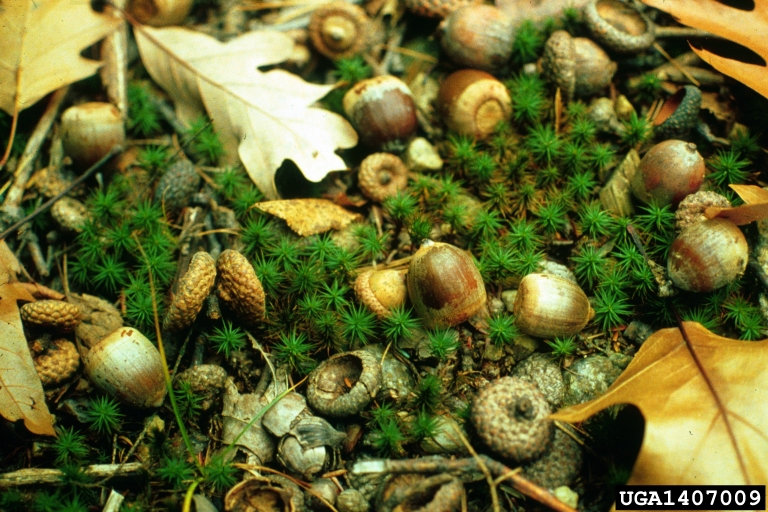By Jeremiah Auer, Regeneration Specialist, Jeremiah.Auer@wisconsin.gov

Credit: USDA Forest Service Northeastern Area, Bugwood.org
The Wisconsin DNR’s Reforestation program has been producing seedlings at its nurseries since 1911. In that time, there have been many changes in personnel, growing techniques and distribution methods. However, something that remained constant is the source of those seedlings: actual seed from Wisconsin’s many native trees and shrubs. From the tiny, pepper-like seed of aspen to the large, green-husked black walnut, the Reforestation staff collects, cleans, sows and stores hundreds of pounds of over 30 species of native tree and shrub seed every year.
Our staff can collect some of the seeds we need while performing our normal nursery tasks. However, with such a large quantity required to satisfy the demand for native trees and shrubs, we rely on a network of seed buying stations throughout Wisconsin and a small army of collectors to procure the needed seed.
Most of the seed comes from rural areas, but much comes from cities and towns too. The easiest way to collect large seeds, acorns, walnuts and hickory nuts is from large crowned, open-grown trees in mowed areas. Hence, pickers tend to focus their attention on parks and natural areas.
However, picking in these more suburban and urban environments is tricky. Because the Reforestation program is dedicated to growing only native and naturally occurring trees and shrubs, the many cultivars, varieties and selections of any tree, even if they are natives, are not accepted.
How to distinguish between native/natural seed and seed collected from landscaping trees and shrubs
It can be difficult to discern which trees are natural versus those planted, even for the most educated and experienced picker. Some examples include:
- Red maple versus Autumn Blaze maple
- American basswood versus little leaf linden
- Hackberry versus sugarberry
- American highbush cranberry versus European highbush cranberry
- White spruce versus Black Hills spruce and blue spruce
A general rule for urban environments: if the tree is huge with a massive crown, it is most likely a native tree. This may not always hold true, especially in some of the oldest settlement areas (Green Bay, Milwaukee) or in the case of fast and large growing species (Norway maple, tulip poplar). A city forester will probably be a good resource.
How to get started
Seed collection should start with a discussion with the landowner or manager. It is essential to receive permission. Some landowners don’t care and will be happy they won’t have to be concerned with hitting large nuts with their lawnmower blades. Others will not approve. Some cities allow this type of picking; others do not. There may be a permit required and it may also have a cost associated with it. Regardless, if you are unsure, ask permission.
We are always looking for more people to add to our cadre of seed pickers. If you are interested or if you are unable to pick but are able to provide observations of areas with large seed crops, we welcome that too.
Contact the Reforestation program’s regeneration specialist, Jeremiah Auer, for more information at Jeremiah.Auer@wisconsin.gov or visit our webpage and find out more about seed collection.
